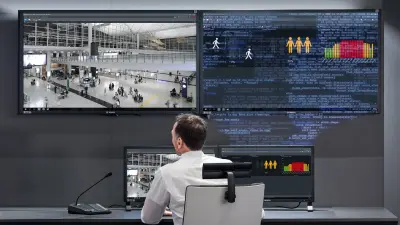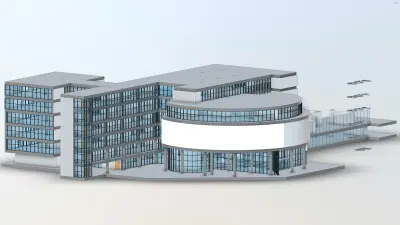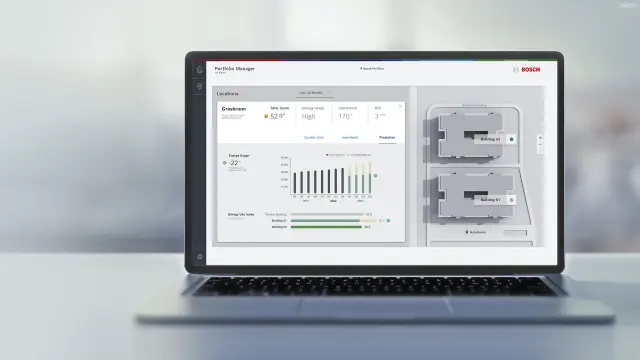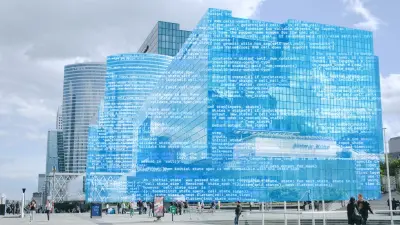Artificial Intelligence in Building Management
The use of artificial intelligence to manage buildings is a hotly debated topic in connection with smart buildings and the future of building operation. But not only there – AI holds great potential across all phases of the building lifecycle. From design and construction and installation of building systems across building operation maintenance and all the way to demolition and disposal, AI is poised to comprehensively support everyday work.
Particularly for building management – during the phase when a building is operated and maintained – artificial intelligence’s largest contribution is to increase transparency and efficiency. The more transparent processes and systems are, the better facility managers and technicians are able to understand a building, with all of its interconnections and interdependencies, and optimize its processes. And both sustainability and cost-effectiveness increase as equipment and systems are operated more efficiently. However, it’s not yet about enabling buildings to operate autonomously. What is happening is that AI is slowly but surely assuming the role of a modern, proactive tool that supports the everyday work of facility managers and technicians. So it’s about time for us to take a closer look: What does AI actually do in the context of building management?

How does AI help manage buildings?
The main value that AI adds in commercial buildings is due to its ability to perform intelligent online analyses, identify long-term trends, and make fast decisions for dealing with complex situations. To learn how to control a building, AI trains itself on a pool of data from building automation and linked systems. On the basis of this acquired knowledge, it can then very quickly identify interrelationships and – eventually – execute learned follow-up actions. This knowledge is correlated with the corresponding contexts, in other words particular areas or rooms of a building. This is a prerequisite to correctly interpret evaluations. Two building blocks are needed for this:
The AI cycle: data as the basis for continual improvement

Continual learning from semantic time series
AI models learn constantly from new semantic information in order to improve their analytical and predictive abilities. This enables continual improvement over the course of time.
Data processing and analysis in the digital twin
The AI algorithms can process large data volumes captured by systems and devices and by the building automation system. They are able to process data faster and more efficiently than in the past to extract relevant information and recognize patterns or anomalies.
Optimized decision-making at the device level
On the basis of the data, the AI issues recommendations for action or can, if wished, make learned decisions. It can automatically respond and initiate actions when certain conditions are met, like for adjusting and controlling room and climate systems.
Domain-specific visualization of technical relationships

While the digital building twin models systemic relationships within the building, the physical structure of an existing building can be converted into 3D models for visualization. Integrating semantic information from the digital building twin in this visualization makes the technical interrelationships easier to use and also easier for nontechnical users to understand.
This type of visualization enormously simplifies the work of planning systems for new and existing buildings: fire detectors and video cameras can be directly installed in the right places without the need to consult PDF plans. The AI supports this in two ways: by providing information on how many fire detectors and video cameras need to be installed where, and by making it possible to, for example, easily create indoor maps for firefighters based on the 3D model.
Data of existing systems can be transferred from the digital building twin to the 3D model. Where and in which areas and rooms are there fire alarms or video cameras? Long-term documentation of semantic time series makes it possible to quickly see in a building’s visualization where, for example, fires have developed or break-ins have occurred and the paths that the burglars have followed after breaking in.
Regardless of whether a new or older building is involved, existing manual documentation of systems and equipment can be checked with the aid of AI. For example, the AI can figure out from brief system descriptions, physical addresses, and the learned building topology which devices have been installed where. This reveals whether the manual documentation is accurate or needs to be corrected.
AI for supporting facility managers and technicians
AI can use collected semantic information to make predictions relevant to a system. It can identify patterns and trends in order to predict future events such as potential equipment failures, anomalies, or the best times to perform maintenance work.
Analysis of consumption data reveals patterns and trends in power consumption – in real time and over long time periods – which can be used to suggest optimal power settings.
Intelligent access checks and video monitoring use AI to proactively and precisely ensure the security of buildings: from reading license plate numbers and automatically opening cabinets all the way to fire protection and access authorizations.
Over the course of a longer period of time, AI learns and evaluates when and how often rooms are used. The results can also be used to adapt lighting and HVAC systems so as to optimize power consumption without detracting from users’ comfort.
Intelligent building technology can adapt to the personal needs and preferences of individual users. It recognizes persons when they enter the building, knows where they will then go, and is familiar with their preferences in terms of brightness and temperature at their workplace.
What shapes people’s hopes?
Data, transparency, and efficiency are the keywords in connection with the use of artificial intelligence in buildings. The more that AI is used, the most important it will also become to ensure that it remains a tool for providing support and that people will always be able to control, or as a last resort override, decisions made by artificial intelligence.
Bosch AI Codex
Bosch has established ethical “red lines” for the use of artificial intelligence (AI). The company has now issued guidelines governing the use of AI in its intelligent products.
AI will change every aspect of our lives. By 2025, the aim is for all Bosch products to either contain AI or have been developed or manufactured with its help. Bosch’s AI code of ethics is based on the following maxim: Humans should be the ultimate arbiter of any AI-based decisions.




